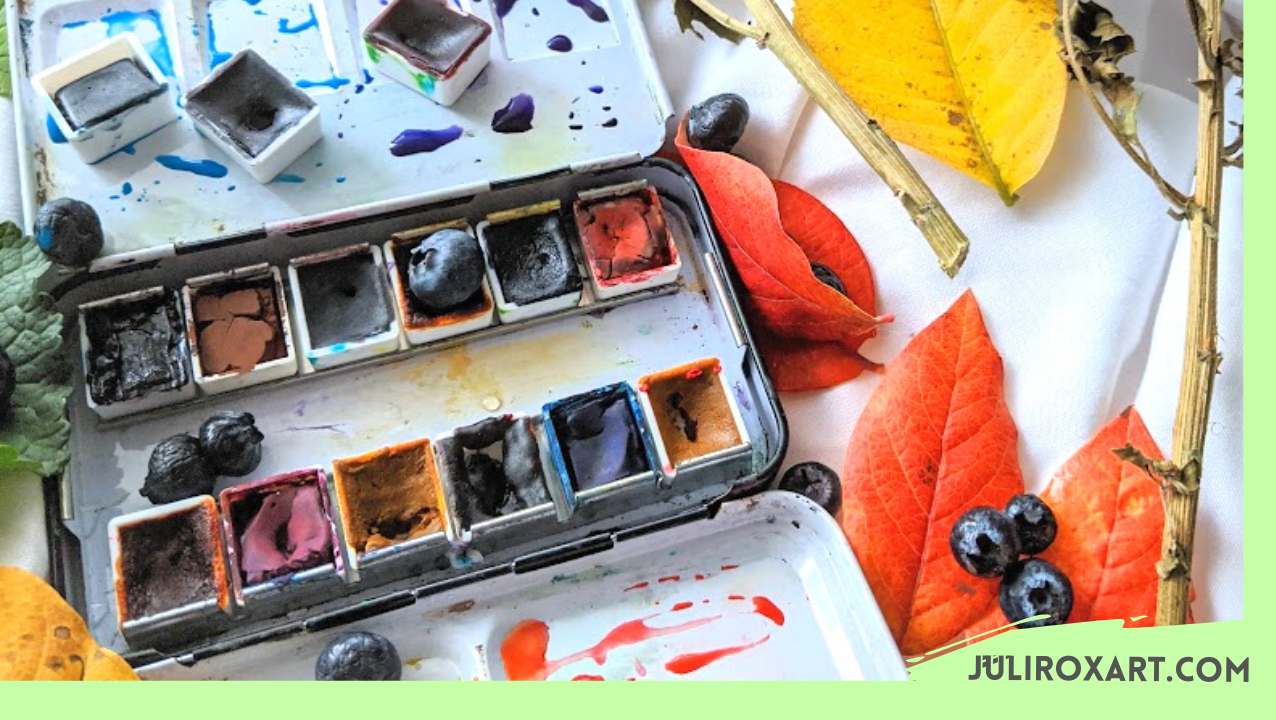To anyone who has been following my YouTube channel for a while, you’d know that I fell into an entire “homemade art supply saga”. And yes, it’s as epic as it sounds—especially to fellow DIY art nerds.
Here’s an entire playlist of the homemade art supply videos that I’ve uploaded so far. Sit back, relax, and enjoy:
Arleebean’s Paint-Making Series (AKA “the catalyst”)
Before diving into my lake pigment exploits, I’d like to give credit where it’s due. What kickstarted this whole DIY journey was a YouTube video posted by Arleebean on paint making. She filmed the process of creating a watercolor binder and mulling store-bought pigments into them. I was in complete awe. Watercolors was just one of those items that I never even considered making by hand.
So naturally, I looked up the prices of materials, including the pigment powder, and was surprised at how expensive the hobby can get. Timing is important here, because at this point, it was late spring, and my dad’s garden was crawling with black currants, raspberries, blueberries, lavender, you name it. So I decided to take this DIY ride a step further and figure out how to make pigment powder out of natural produce. I mean, if blackberries can stain my fingertips, why not a sheet of paper?
Note: Being extra as hell, I figured why not go all out and make handmade cotton watercolor paper too. But I’ll save this adventure for a separate post.
My Frankenstein Muller and Slab
You need a few materials to get started. For paint-making in general, you need a muller, slab, and palette knives. This goes for both watercolor and oil paint. A professional paint muller is made entirely of glass, and resembles a chess pawn; but if you break down it’s main components, what you really need is some form of a flat glass base and a handle. I managed to find a small flat candle holder at Michaels for a whooping CAD$3.50 and superglued a chunk of an old toilet plunge holder onto it. Not the most glamourous variation, but hey, we gotta work with what we’ve got.
In other news, I’ve discovered a muller for sale on AliExpress that doesn’t break the bank. Honestly, if I knew I could buy one for CAD$25 including shipping, I probably wouldn’t have bothered with my Frankenstein-esque version.
In terms of the slab, I just used an old ceramic tile that my dad had kicking around. I’ve heard that some people use glass from a large picture frame, but it needs to be something thick enough to handle hours of mulling.
WTF is “Potassium Aluminum Sulfate”?
In order to make lake pigments specifically, you’ll need
i) Dye Materials (whether it be berries, leaves, herbs, or colorful veggies)
ii) Potassium Aluminum Sulfate (AKA “Alum”)
iii) Washing Soda (AKA “soda ash” (AKA “sodium carbonate”))
I know what you’re thinking, what the fuck is Potassium Aluminum Sulfate? Simply put, it’s a type of pickling agent.
It also happens to be a mordant.
Which just so happens to be a substance that adds as a fixative for dye.

Essentially, a lake pigment is a type of pigment powder created by extracting color from a dye material and having it precipitate onto a neutral substance. So, Step 1: Boil dye materials to draw out color. Step 2: Add washing soda for color to cling onto. Step 3: Add mordant (e.g. alum) to help the color latch onto the washing soda.
Then Step 4 is to wait for the pigment to sink to the bottom of your container so that you can filter it out. Whatever is caught in your filter is then left out to dry, fully grinded, and mulled into a binder to create paint. Easy peasy, right?
A Few Visuals to Help You on Your Journey
Okay, maybe it sounds a bit complex, but I assure, after doing this once, you’ll get a much better idea of how it’s done. And to help you along your pigment-making journey, feel free to watch these videos that I filmed, not only making lake pigments, but painting with them.
A/N: First of all, I’m sorry if this post is a little bit rough around the edges. It’s been a very long time since I’ve last posted. Le virus is really taking a toll on my desire to write.
I’ve been experimenting with even more dye materials, including avocados, onion skin, red sorrow, and ivy. Fingers crossed at least one of these work out well. If not, I guess it’s back to the drawing board.
If you have any questions, feel free to ask away.
Good luck.




